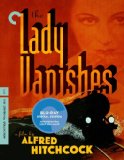| Reviews & Columns |
|
Reviews DVD TV on DVD Blu-ray 4K UHD International DVDs In Theaters Reviews by Studio Video Games Features Collector Series DVDs Easter Egg Database Interviews DVD Talk Radio Feature Articles Columns Anime Talk DVD Savant Horror DVDs The M.O.D. Squad Art House HD Talk Silent DVD
|
DVD Talk Forum |
|
|
| Resources |
|
DVD Price Search Customer Service #'s RCE Info Links |
|
Columns
|
|
|
Lady Vanishes, The
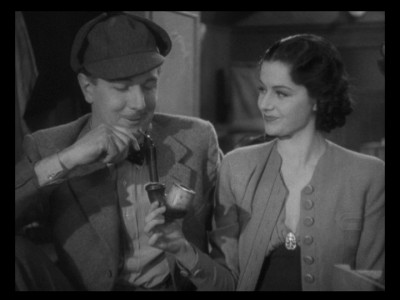
Please Note: The screen captures used here are taken from Criterion's prior DVD release, not the Blu-ray edition under review.
Although I (probably predictably) consider the later, American Hitchcock the Great one in light of his astonishing, nearly unbroken two-decade run of excellent films and flat-out masterpieces (with Vertigo the crowning achievement), it's also always a delight to go back to his British roots for a look at a great film artist developing his singular gift, the evidence of which is already everywhere in his work. Part of what distinguishes that later (1950s-1970s) Hitchcock is the formalism, the near-geometric symmetry and sometimes shocking coolness of his pictures from that period, which came in part from abandoning the looser, more modest, and frankly more pleasant qualities that are evident in some of the British films, with 1938's The Lady Vanishes as a case in point. Its story places the characters in life-or-death jeopardy, and there is a certain paranoid, claustrophobic psychological dimension to it that affords a fair bit of eerie menace, but whereas the playfulness Hitchcock brought to bear on the same elements in his later work was usually manifest as dark, deadpan humor, and mordant (some might say sadistic) drollery, there is a perky quality to The Lady Vanishes that marks it off in Hitchcock's oeuvre as its own kind of more relaxed, less (in)tense pleasure.
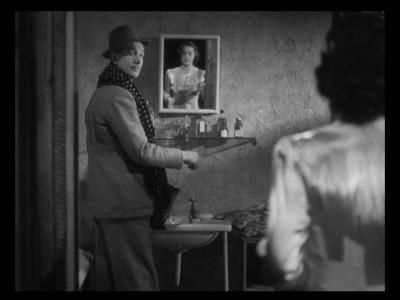
The film actually begins something like a screwball comedy, with a scenario reminiscent of Grand Hotel: A handful of British tourists are forced to hole up at a hotel near the train station of a little Central European town (the country is unnamed; one might guess Hungary) after their train is delayed, an inconvenience which allows us to get to know our cast of characters, including Mr. and "Mrs." Todhunter, a British official and his mistress who are returning from an adulterous vacation together, and Charters and Caldicott, two fusty and extremely, stereotypically English gentlemen who are in a tremendous hurry to get back home in time for a vital cricket match. Then there are the three guests who turn out to be central to the tale: Gilbert (Michael Redgrave, later so amazing in The Browning Version), a musicologist whose noisy research leads to a contentious encounter with his downstairs neighbor, Iris Henderson (Margaret Lockwood), an upper-crust British girl who has gone away for one last taste of freedom with her girlfriends before returning to England and the dull aristocrat to whom she's engaged. There is an erotic energy between Gilbert and Iris, with sparks flying between the indignant girl's intrigued propriety and the stubbornly annoying yet dapper upstairs nuisance's cockiness. Lastly, there's a doddering old nanny, Miss Froy (Dame May Whitty), who seems an odd person to be involved in the sinister events preceding the English group's departure after their night in the hotel, which include the murder of a violin-playing busker immediately after he's finished a tune which Mrs. Froy attentively listens to from her open window and hums to herself afterward--a tune whose significance becomes clear later on--and the clobbering on the head that young Iris takes when a heavy pot, actually intended for the noggin of Miss Froy, is pushed purposely from the window above as they prepare to board the train.
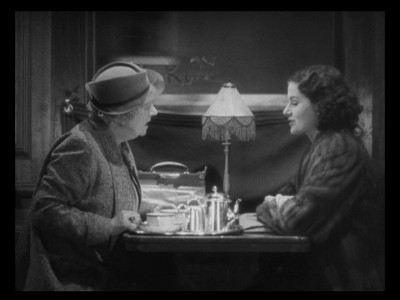
In his very astute audio commentary for the film, Bruce Eder points out that the moment at which the locomotive finally lurches forward is also precisely the moment of the film's plot and pace rolling out of the establishing "station" that is the languorous, zany, apparently actively-idling first third at the hotel, and that's exactly right: from this point on, we're in territory that would, over his filmography, become a familiar Hitch twilight world where inexplicably menacing situations close in around hapless, ordinary people who must draw on resources of strength and intelligence they didn't know they had, all the while coming off not entirely ungrateful for the turn toward adventure, excitement, mystery, and danger that their heretofore blandly predictable lives have taken. Miss Froy accompanies Iris onto the train and is all set to be her nurse/traveling companion for the journey's duration, but after Iris falls momentarily comatose and awakens some time later, her elderly friend is nowhere to be found, which might not be so concerning were it not for the fact that Iris's inquiries to the other passengers in her and Miss Froy's compartment, and then to the train's staff, are met with the claim that there never was an old English lady--that Iris imagined Miss Froy, or is somehow otherwise mistaken. Particularly intent on denying Miss Froy's existence are the baroness and the touring magician/illusionist sharing Iris's compartment (a pair that seems, significantly on the film's English-made, pre-WWII terms, foreign and shifty) and an apparently well-meaning neurologist, Dr. Hartz (Paul Lukas), who insistently explains to Iris that her hurt head has understandably led her to the most vivid imaginings. The young lady beseeches her fellow Brits for backup, but Caldicott and Charters have been, hilariously, too worried about whether or not they'll be back in time for their cricket event to pay sufficient attention, while Mr. and "Mrs." Todhunter, whom we have seen encounter Miss Froy on the train, must evade the burgeoning onboard controversy for fear of having the illicit nature of their relationship revealed. The only one left is that maddening Gilbert, the musicologist, with whom Iris, reluctantly at first, teams up to sleuth out what the hell is going on. Gilbert seems at first to merely be tolerating the whimsy of a pretty young woman for the obvious reasons, but events transpire to convince him of her story's truth and that there's a conspiracy afoot. The pair (couple?) develop a flirty rapport as they root out the shocking truth about their fellow passengers, the meaning of the murdered violinist's tune, and Miss Froy herself.
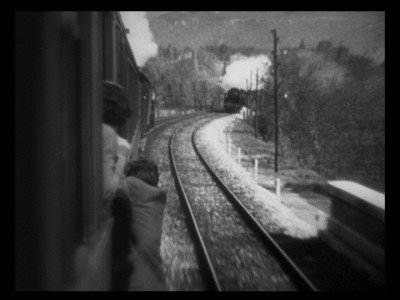
One never gets tired of experiencing The Lady Vanishes's dynamic, surprising movement from light comedy/drama to taut spy thriller, Hitchcock pulling the strings ever tighter as the film advances, with Redgrave and Lockwood's brilliant comic and romantic chemistry providing a through-line that keeps all the mounting suspense feeling like a thoroughly involving and entertaining lark. Even in this earlier phase, the director already knows how to very nimbly suspend our disbelief in an ultimately non-realistic mode (here, as in Rope, the exteriors are (mostly) models and matte work, but it scarcely matters except to add a stylishly artificial touch) with his intuitively skillful sense of pacing and tone. (The Lady Vanishes's charm comes more from its dialogue, courtesy screenwriters Sidney Gilliat and Frank Laudner's, than do later Hitchcocks, but he's already working the kind of wonders with the camera that only a supremely visual director can.) There is a historical level on which The Lady Vanishes is (perhaps quaintly) interesting as pre-war, anti-isolationist propaganda, in particular toward the end, in scenes where Mr. Todhunter is rather bluntly made to stand in for the reticent faction in English politics with his compromised, corrupt, self-interested and ultimately self-destructive isolationism on display as he waves a white flag of surrender for dishonorable foreigners who respect no such codes of civility. But well above and beyond being a cultural window on 20th century history, it's a brilliant milepost on Hitchcock's journey toward greatness. It may have taken further refining and honing of them to take his mature work to those greater heights from which it towers over so much of the cinema that followed, but the ingredients of Hitchcock's ingenious aesthetic, technical, and philosophical approaches are already gathered together in The Lady Vanishes for an adroitly orchestrated comic/romantic/suspenseful ride that it's always great fun to take just one more time.
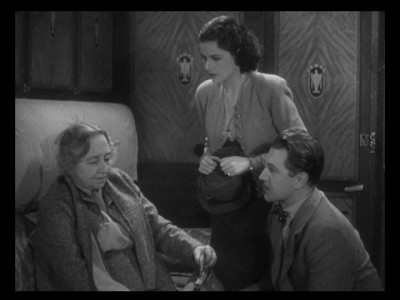
THE BLU-RAY DISC:
Compared to the prior 2007 Criterion DVD re-release, there is a noticeable improvement in the quality of the image on this high-definition, 1080/24p, AVC/MPEG-4 encoded transfer, which presents the film at its original aspect ratio of 1.33:1. There remains a slight softness to the image that may be just a part of cinematographer Jack E. Cox's aesthetic touch or an attribute of the particular technology available at the time, but very little compression artifacting or other flaws are discernible, and the transfer is, as usual for Criterion, more than up to snuff overall.
Sound:The disc's uncompressed PCM 1.0 monaural soundtrack is sparkling clear, transmitting every moment of the film's sound virtually as-recorded. The original sound engineers do seem to have had a more quiet, muffled approach to dialogue than to the film's other sounds, leading to some straining to hear what's being said in some scenes alternating with very jarring, sudden, loud bursts for an overall soft-loud dynamic between the moments when the characters are speaking and ones filled by noises like train whistles and gunfire. These are, however, clearly attributes of the film, not the disc, the sound quality of which is evidently perfectly faithful to the source audio.
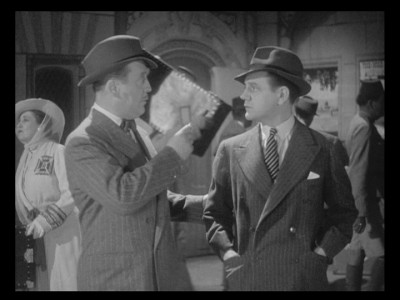
--Film historian Bruce Eder brings some extensive knowledge and insight to bear on his rich and well-organized (if somewhat drily read) audio commentary, in which he deftly analyzes the film's structure, pacing, editing, and story elements as he relates it all to Hitchcock's body of work (and to cinema and television in general) while intermittently taking a break from the overarching train of thought to parenthetically dissect the blocking, mise-en-scène, performance, and other more salient bits of the film's content as it goes by. His work here makes the film well worth playing over with the commentary track turned on, particularly for those less familiar with Hitchcock's earlier, British work, but really for any viewer looking to broaden their frame of reference and deepen their understanding vis-à-vis Hitchcock.
--A surprisingly generous inclusion is an entire additional feature, John Baxter's 1941 film Crook's Tour, in which Basil Radford and Naunton Wayne reprise their The Lady Vanishes roles and bring Charters and Caldicott to life once again, this time at the center of the action. Just as in Hitchcock's film, Charters and Caldicott are deeply and determinedly middle-class, English-to-the-bone characters whose primary concern amid all the international espionage, intrigue, trickery, and danger they fall deeper and deeper into is to maintain their stiff-upper-lipped, perpetually awkward and embarrassed decorum and get back to Blighty in time for the cricket match. Much lighter and simpler than The Lady Vanishes, Crook's Tour displays the talents of a droll, harmless, often delightful comic duo in something like the manner of a Laurel and Hardy picture, or one of the Crosby and Hope Road To series. The film is set in Iran, and its plot centers on the protection of an English oil well in the Iranian desert (though the film was clearly shot on a soundstage, and every character, no matter what their nationality, acts British and speaks in an English accent), so for the historically, socially, or culturally minded, it is also a revealing and unsettling artifact of English colonialism in the Middle East and its repercussions, which we still face quite immediately today. Also selectable on this supplement is a bit of onscreen text that succinctly explains Caldicott and Charters' origins and their ongoing popularity with the British public.
--A 10-minute excerpt from François Truffaut's famous 1962 interview with Hitchcock in which the younger director queries his idol specifically about The Lady Vanishes is transformed into an audiovisual essay, with the scenes under discussion, press clippings, and still photos synchronized with the audio. Hitch drolly and patiently fills his most famous fan (and us) in on his creative and technical ideas in general at the time, as well as the process of making this particular film. Also included is a brief onscreen paragraph simply explaining Truffaut and Hitchcock's interview/collaboration for those not already in the know.
--"Mystery Train", a half-hour video essay by film scholar and author Leonard Leff. Leff has more than enough anecdotes, history, and general context at his fingertips to share with us as he places The Lady Vanishes in the contest of both Hitchcock's career/body of work and the history of British cinema.
--A stills gallery containing about 25 behind-the-scenes photos along with various posters, lobby cards, and other promotional materials created for the film's release.
--The accompanying 20-page booklet features an incisive essay by Geoffrey O'Brien on the film, as well as a piece by Charles Barr addressing its particularly English flavor.
FINAL THOUGHTS:The Lady Vanishes may not have the overpowering, precise perfection of Hitchcock's later American films (which may be cause for some to prefer it, actually), but what it lacks in ultra-meticulous force and formalism, it makes up for with a winning approachability; it's one of Hitchcock's friendliest films. That's not to say that it isn't packed with an attention to detail, a visual wittiness, and a sense of humor whose darkness sneaks up on you that make it all Hitchcock's own; it's something like a lighter, more carefree early prototype demonstration of the sensibility he would develop into something truly indelible (and rather less friendly) in the future. The film, particularly as seen on this splendid new Blu-ray edition, is both essential and indulgent viewing for any admirer of Hitchcock (which, to my mind, is virtually synonymous with any movie lover, period). Highly Recommended.
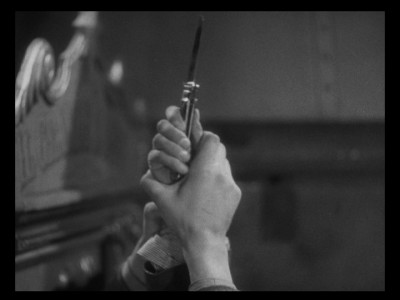
|
| Popular Reviews |
| Sponsored Links |
|
|
| Sponsored Links |
|
|
| Release List | Reviews | Shop | Newsletter | Forum | DVD Giveaways | Blu-Ray | Advertise |
|
Copyright 2024 DVDTalk.com All Rights Reserved. Legal Info, Privacy Policy, Terms of Use,
Manage Preferences,
Your Privacy Choices | |||||||









